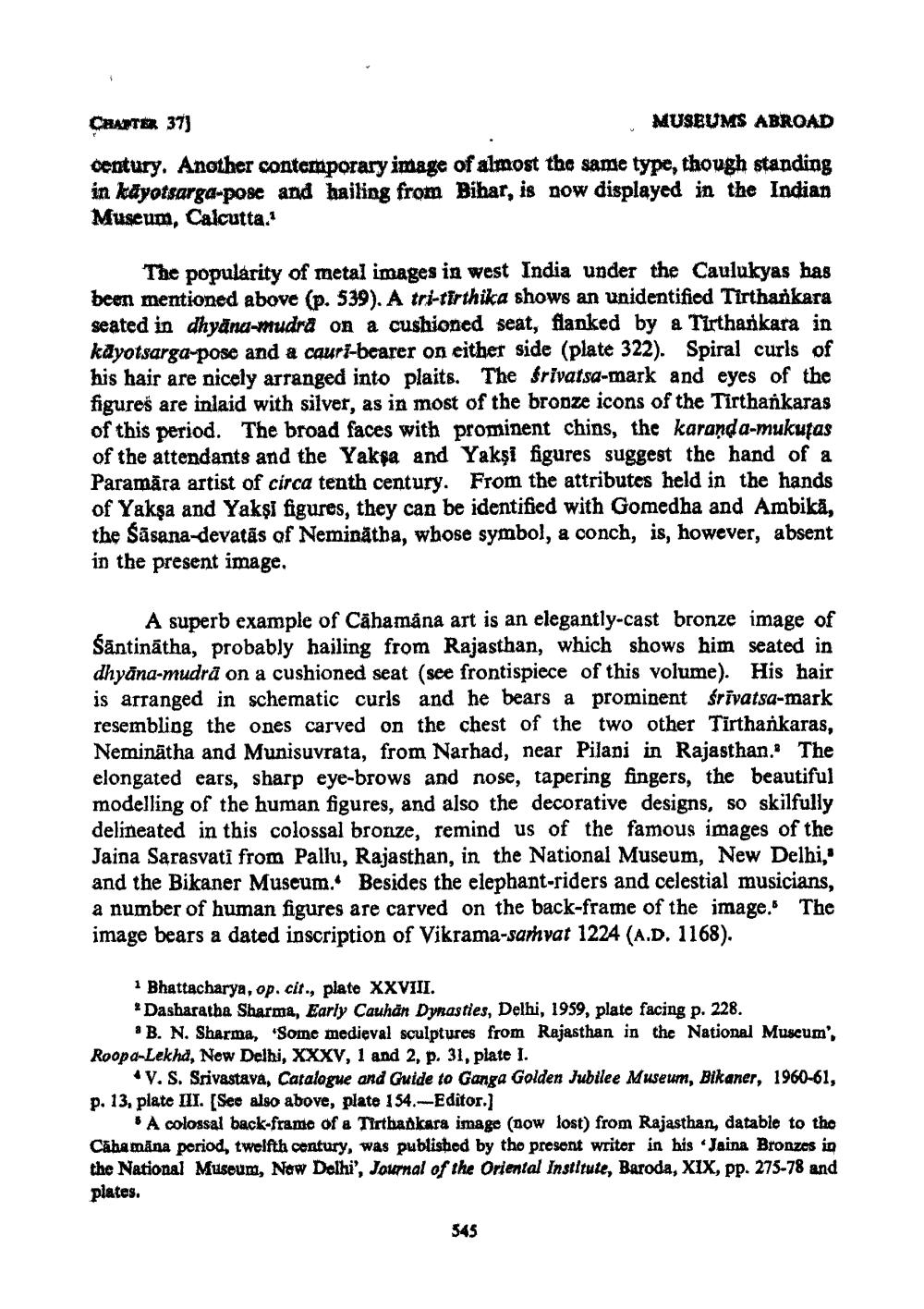________________
CHAPTER 373
MUSEUMS ABROAD
century. Another contemporary image of almost the same type, though standing in käyotsarga-pose and hailing from Bihar, is now displayed in the Indian Museum, Calcutta.
The popularity of metal images in West India under the Caulukyas has been mentioned above (p. 539). A tri-irthika shows an unidentified Tirtharkara seated in dhyana-mudra on a cushioned seat, flanked by a Tirtharkara in kāyotsarga-pose and a cauri-bearer on either side (plate 322). Spiral curls of his hair are nicely arranged into plaits. The frivatsa-mark and eyes of the figures are inlaid with silver, as in most of the bronze icons of the Tirthankaras of this period. The broad faces with prominent chins, the karanda-mukutas of the attendants and the Yakma and Yakşi figures suggest the hand of a Paramăra artist of circa tenth century. From the attributes held in the hands of Yaksa and Yakşi figures, they can be identified with Gomedha and Ambika, the Sāsana-devatās of Neminätha, whose symbol, a conch, is, however, absent in the present image,
A superb example of Cähamana art is an elegantly-cast bronze image of Santinātha, probably hailing from Rajasthan, which shows him seated in dhyāna-mudrä on a cushioned seat (see frontispiece of this volume). His hair is arranged in schematic curls and he bears a prominent srivatsa-mark resembling the ones carved on the chest of the two other Tirthankaras, Neminātha and Munisuvrata, from Narhad, near Pilani in Rajasthan. The elongated ears, sharp eye-brows and nose, tapering fingers, the beautiful modelling of the human figures, and also the decorative designs, so skilfully delineated in this colossal bronze, remind us of the famous images of the Jaina Sarasvati from Pallu, Rajasthan, in the National Museum, New Delhi," and the Bikaner Museum. Besides the elephant-riders and celestial musicians, a number of human figures are carved on the back-frame of the image. The image bears a dated inscription of Vikrama-sarhvat 1224 (A.D. 1168).
Bhattacharya, op. cit., plate XXVIII. Dasharatha Sharma, Early Cauhän Dynasties, Delhi, 1959, plate facing p. 228.
*B. N. Sharma, Some medieval sculptures from Rajasthan in the National Museum, Roopa-Lekha, New Delhi, XXXV, 1 and 2, p. 31, plate I.
*V. S. Srivastava, Catalogue and Guide to Ganga Golden Jubilee Museum, Bikaner, 1960-61, p. 13. plate III. (See also above, plate 154.-Editor.)
A colossal back-frame of a Tirthankara image (now lost) from Rajasthan, datable to the Cahamāna period, twelfth century, was published by the present writer in his “Jaina Bronzes in the National Museum, New Delhi', Journal of the Oriental Institute, Baroda, XIX, pp. 275-78 and plates.
545




